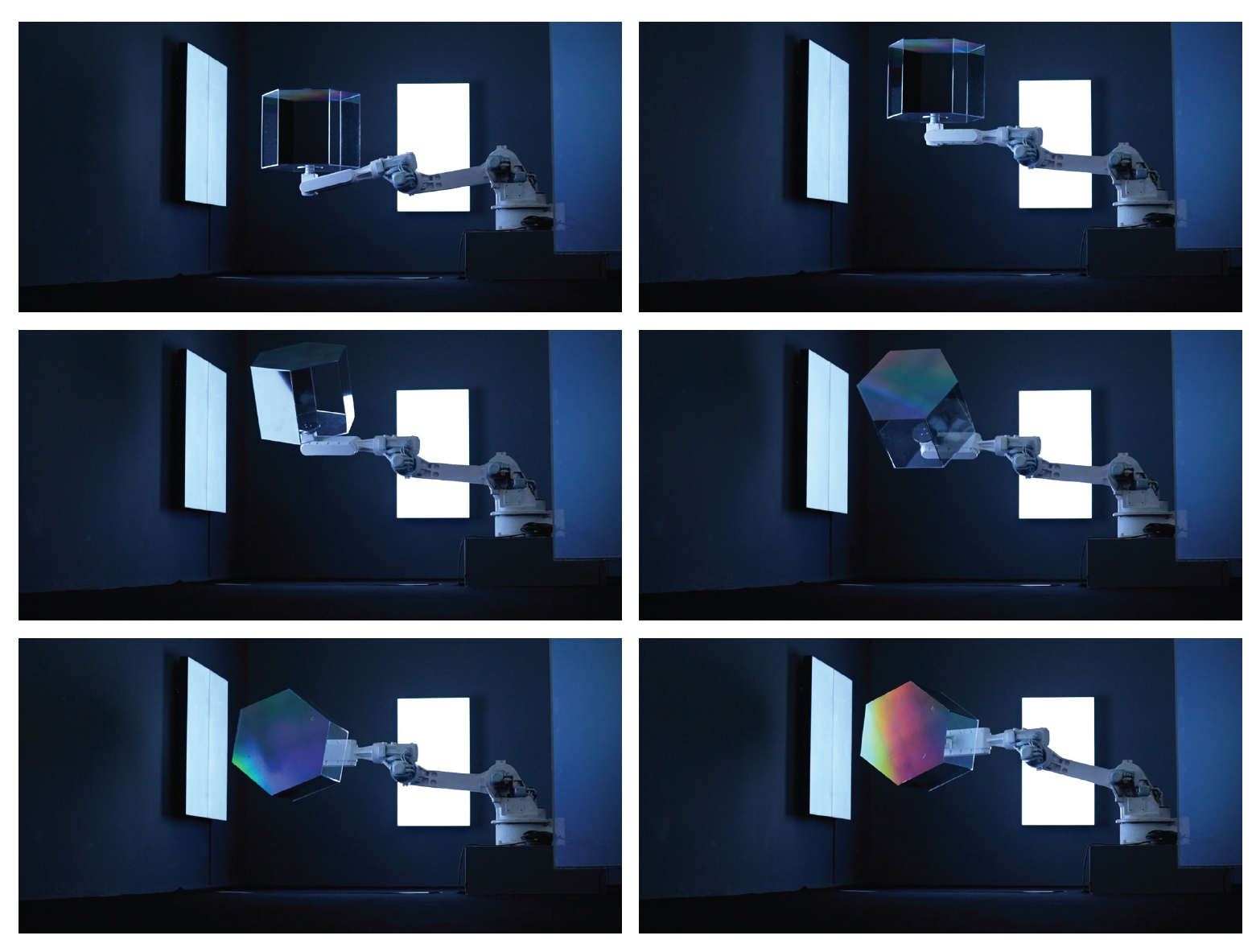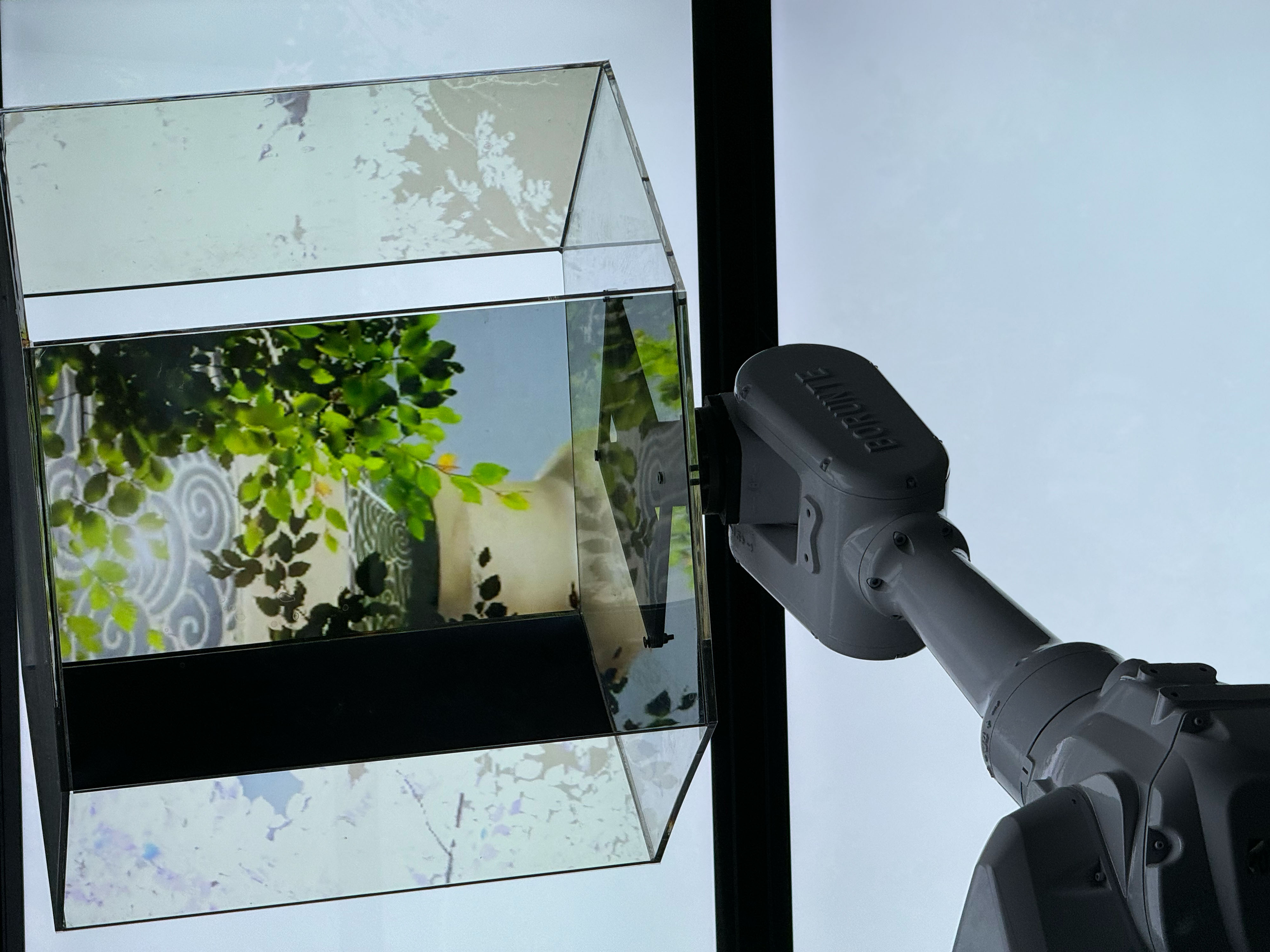Multi-Agent Installation (Robotic Arm, Screens, Polarizing structure)
This artwork, realized through two AI-controlled robotic arms and a set of carefully designed optical devices, adeptly illuminates the intricate relationship between the boundless potentialities revealed by multi-agent simulations and the concrete decisions we must make in actual life. Within the piece, three distinct viewing planes offer unique “slices” drawn from the Alt-Mirage system. Each slice, seen from its own angle, symbolizes the diverse futures that multi-agent systems might project when modeling complex environments—such as the colonization of Mars—while simultaneously hinting at the inherent limitations of our real-world choices.

Although simulation frameworks can present an abundance of possible trajectories, in our everyday reality we are compelled to base our decisions on existing data and present circumstances, ultimately progressing along a singular, predetermined path. This interplay highlights how, despite innumerable theoretical outcomes, each real-life decision sets us irrevocably on a particular course toward one specific future.

By visually and conceptually juxtaposing these elements, State Slices invites viewers to ponder the extent to which multi-agent simulations, in theory, grant us a platform for exploring multiple possibilities—while acknowledging that our real-world decisions will ultimately shape and define our futures. The work not only probes the moral, social, and cultural challenges of coexisting with artificial intelligence, but also underscores the paramount significance of our choices when confronting transformative endeavors, such as the colonization of Mars.

In this thought-provoking visual landscape, the artwork lays bare the complex interplay between technology and human agency, revealing both our cognitive constraints and the weighty responsibilities we bear in navigating unknown and intricate scenarios. Here, viewers are called upon to consider the subtle balance between infinite possibility and tangible choice, and how we might negotiate this delicate equilibrium to collaboratively forge our shared future.





